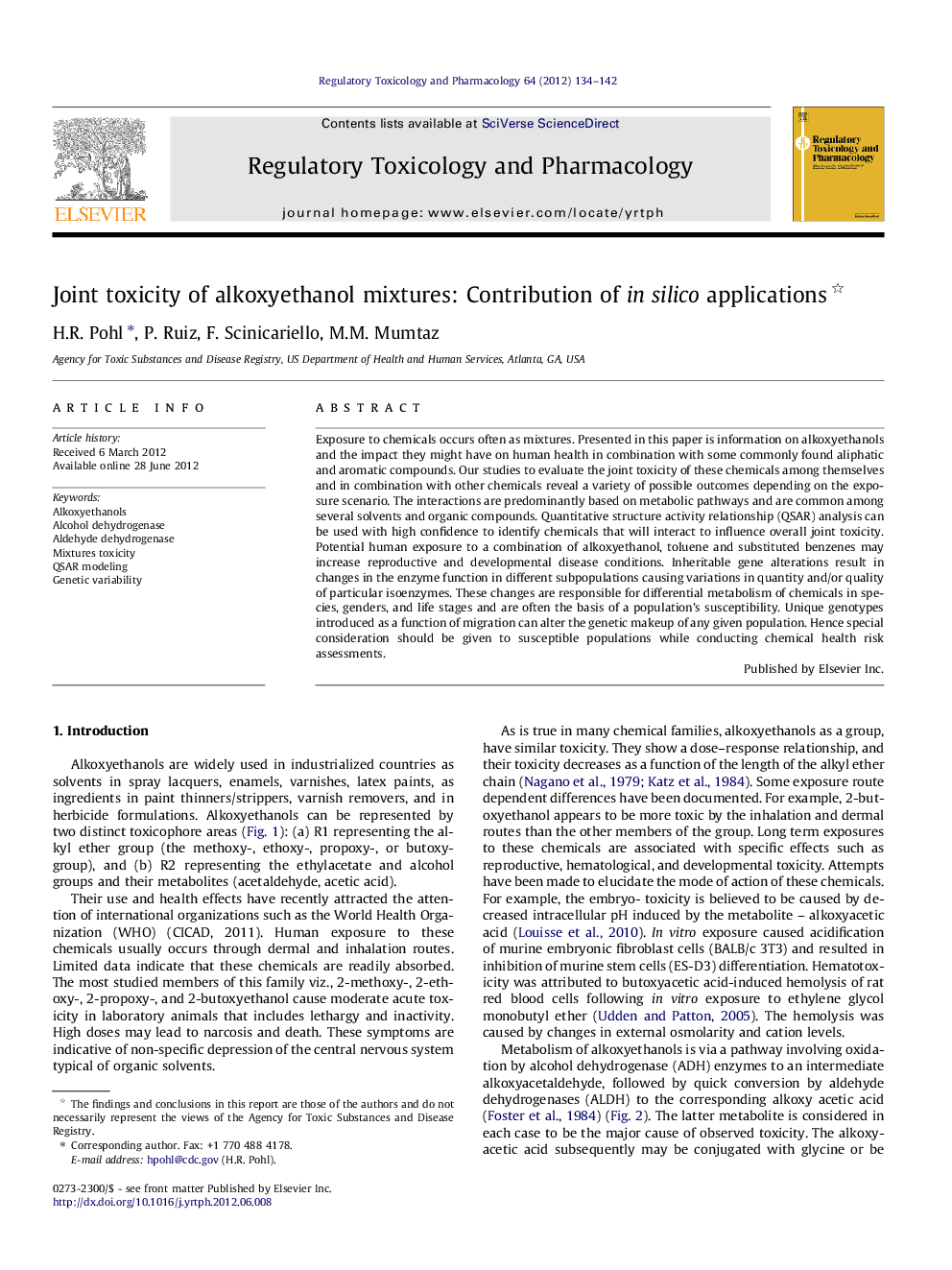| Article ID | Journal | Published Year | Pages | File Type |
|---|---|---|---|---|
| 5857150 | Regulatory Toxicology and Pharmacology | 2012 | 9 Pages |
Exposure to chemicals occurs often as mixtures. Presented in this paper is information on alkoxyethanols and the impact they might have on human health in combination with some commonly found aliphatic and aromatic compounds. Our studies to evaluate the joint toxicity of these chemicals among themselves and in combination with other chemicals reveal a variety of possible outcomes depending on the exposure scenario. The interactions are predominantly based on metabolic pathways and are common among several solvents and organic compounds. Quantitative structure activity relationship (QSAR) analysis can be used with high confidence to identify chemicals that will interact to influence overall joint toxicity. Potential human exposure to a combination of alkoxyethanol, toluene and substituted benzenes may increase reproductive and developmental disease conditions. Inheritable gene alterations result in changes in the enzyme function in different subpopulations causing variations in quantity and/or quality of particular isoenzymes. These changes are responsible for differential metabolism of chemicals in species, genders, and life stages and are often the basis of a population's susceptibility. Unique genotypes introduced as a function of migration can alter the genetic makeup of any given population. Hence special consideration should be given to susceptible populations while conducting chemical health risk assessments.
⺠We model joint toxic action of alkoxyethanols. ⺠We model interactions between chemicals that utilize ADH in metabolic pathways. ⺠We use QSAR modeling to predict possible interactions with other chemicals. ⺠We predict the impact of genetic variability on risk assessment.
